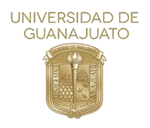
Guanajuato, Gto., October 10, 2019.- Fully installed in the Mineral de la Luz in this city, and in the testing phase, there are the three new antennas or radio telescopes of the Department of Astronomy of the Division of Natural and Exact Sciences (DCNE) of the Guanajuato Campus of the University of Guanajuato (UG).
These instruments, as commented by Drs. Lucero Uscanga Aguilera, Josep María Masqué Saumell and Carlos Alanías Rodríguez Rico, will allow researchers to study the physical conditions of the gas surrounding the stars, observe cataclysms events, or ephemeral events that sometimes occur in the sky, for example, the explosion of a super nova.
They will also allow to position the University of Guanajuato as a unique astronomical observation site in the country and even in Latin America, because the intention in the installation of these instruments is to promote the research, dissemination and use of these astronomy and engineering students to develop and test their thesis on this site.
In an interview with the Department of Astronomy researchers, they stated that these antennas operate on radio frequencies, and they are technically referred to as radio telescopes, measure 5.3 meters and are single-plate antennas, although the idea is that in the future they will be make an interferometer radio.
They detect, they said, electromagnetic waves in radio wavelengths of objects in the universe that are emitting in different wavelengths, and can be seen as the colors of light, electromagnetic phenomenon that on the one hand is invisible, infrared, and beyond the infrared, there's the radio detected by the antennas.
That radio emission is the ionized gas found around stars, and radio telescopes study the physical conditions of the gas surrounding the stars, temperature, density and speed of the gas.
These instruments, they said, are one-of-a-kind in Mexico, as there are other radio telescopes in the country, a very large one - 50 meters - in Puebla, for example, but observes at a frequency different from those of the UG.
"An interferometer radio array, radio telescopes, is something that is not abundant in the world because you need to acquire three or more radio telescopes," they said, and Mexico will have the opportunity to have an interferometer radio, observing the wavelength at a centimeter, which makes them unique, at least in Mexico and Latin America.
In the future there will be student practices, they said, but at this time not yet because it is in the testing phase and you have to do a test on the power of the instrument, but the idea is that it is for research, for dissemination and for astronomy and engineering students, develop and test their theses here.
Dr. Uscanga pointed out that the main objective of the antennas is to record a very particular emission that has the name "maser", very intense laser-like emission, only that the lasers are located within the visible waves and the maser within the lengths of radio waves; type of emission that can occur either in regions where stars are forming or also in stars that are about to die.
The goal then would be to look for this type of emission in the stars and, in particular, it will be studied for the water molecule, which is the one that is given about one centimeter to one point three centimeters, at that wavelength; although the testing phase is currently being staged, the antennas will be characterized to know their efficiency and that they are well calibrated.
The placement and operation of these antennas, they argued, is of great importance to the UG, because it will put the University on the map of Mexico as an important landmark because we have infrastructure to be able to carry out this type of studies in radio.
Until now, only the National Institute of Optical and Electronic Astrophysics (INAOE) in Puebla, has an antenna, but it is different; and there are some of the UNAM in Morelia, but they are used for practical studies, for students, not so much for doing research, as will be the case of Guanajuato.
They also emphasized that it is very useful to have this instrument at the University of Guanajuato, because radio astronomers require observation time to develop and solve their projects and you must contend to get the use of a radio telescope at an international level. The advantage then is that the UG will have its own instrument for research.
It is worth mentioning that the antennas were acquired since 2017, the purchase was made with a company from England and the cost of each antenna was 1 million 300 thousand pesos, although with taxes and installation, the investment reached 5 million pesos.
Photo gallery





